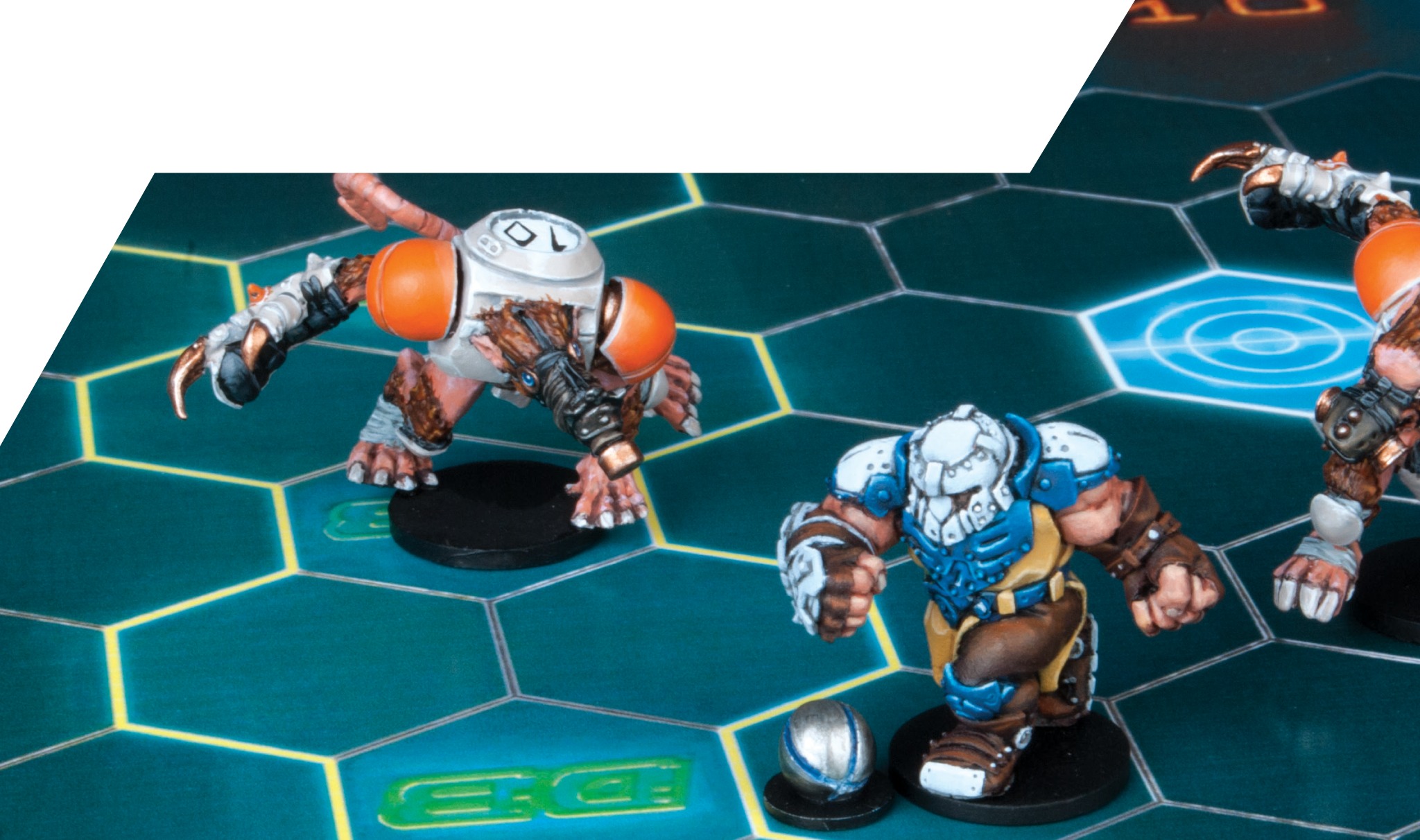DreadBall Teams
faq There are thousands of professional DreadBall teams in the many full-time leagues of the Corporation’s Co-Prosperity Sphere. Each team is run by one or other of the myriad corporations within The Corporation. Some make this obvious, such as the Trontek 29ers or the Shill Industries Nightmares; others go for the showmanship of names like The Beasts or the simplicity of a place name and a trade – for example, the Prosperion Prospectors. A few, like the Midgard Serpents, are inspired by ancient mythology.
Team names are often related to the race(s) of their players as part of being a successful DreadBall team is the showmanship, story and spectacle you bring. Although the Co-Prosperity Sphere is mainly human and wars are fought against Forge Fathers, marauding Orx and so on, this doesn’t mean that all other races are bad. Many of them are DreadBall fans too!
All of the non-human teams have dramatic histories describing how they came to be playing DreadBall, and some of them are even true! More common than the unadorned truth is a degree of artistic license and exaggeration that everyone knows is there, but all ignore because it makes the whole spectacle more exciting. It’s a bit of escapism for the crowds, and nobody is interested in the mundanities of the real workings behind the scenes. DreadBall is a sort of combination of sport, carnival and soap opera, all rolled together to form a unique and compelling blend.

Team Types
Each starting team roster is strictly controlled by the DGB, and each must conform to one of the recognised (and approved) formats. This means that all starting teams of a given type are identical. See the following pages for the initial line-ups of the four most common team types.
This limitation of initial team rosters allows the DGB to ensure fair, balanced and interesting games for the crowds to watch. Of course, as soon as you join a league and get a few matches under your belt the team will change and grow, but that too is fun for the fans to follow.
Rather than list them as simply “human teams”, “Veer-myn teams”, etc, each of the four types is described as a famous example – just as they were when they started out. This gives you a better idea of the character and history you can include in a team and acts as a sort of template for you to invent your own. Of course, if you want to, then simply use the examples given here!
Starting Your Team
Every team starts with 8 players, but each type of team has a different combination of player roles. Have a look at the different rosters, read their descriptions and look at the models. One of the teams will appeal to you more than the others, and this is the one you should play. Don’t worry about why you chose it or which is “the best” – they’re all balanced and in the hands of a skilled Coach they can all win.
Reading a Team Roster
This is mostly self-explanatory. The types of player who play in that team are listed on the left. If a player type is not listed then the team does not have them. For example, the Greenmoon Smackers and other teams of Orx and Goblins do not include Strikers. Here is their full roster:
Greenmoon Smackers - Orx/Goblins
Starting Team: Guards x3, Jacks x5
Notes: Guards are Orx, Jacks are Goblins
Starting Assets: 1x Dice, 1x Card

- 5
- 3+
- 4+
- 5+
- 4+
- 13

- 5
- 5+
- 3+
- 4+
- 4+
- 9
The game values for Move, Strength and so on are shown against each player type. Starting team shows how many of each type of player are included in an approved starting team. Every team begins with 8 players. In the example shown here, the team starts with 3 Guards, 5 Jacks and no Strikers.
The cost is only used on leagues, and is the price (in millions of credits) to permanently hire one more of that player type from the pool. This is a one-off charge, paid when the player joins the team. The notes section lists any additional abilities a player may have. These are rare in starting players, but will fill up quickly when you start playing in a league.
The number of Coaching Dice and DreadBall Cards the team starts with are listed below each roster.
Starting up a new team is simple. All you need to do is choose which of the four types you want to play and then copy their 8 player starting line-up onto a roster sheet.
Once you’ve made your decision and written out your roster sheet then you can start to personalise things. Obviously you’ll need a team name. You can use one of the examples in this book or make up your own. Players need names too, though I’d save nicknames for later. These will naturally suggest themselves as a result of game events and are much more fun when tied into a history you share with your gaming buddies. Add all these names to the roster.
You can also decide on team colours, a fancy logo and even a team song if you’re feeling creative. Why not write them a back story? How did they come about? Which corporation is behind them? There’s lots you can do to make your team unique.
Of course, you won’t get far without models to play with, so you’ll need to ensure that you’ve got a set of the appropriate miniatures for your team. Ideally these should be painted
in whatever team colours you’ve decided on. However, to start with the most important thing is that they are the right models so that your opponent can tell at a glance what type each player is (Striker, Guard or Jack) and they have their player number on somewhere. The numbered positions on the team roster need to match the number on the player’s shirt. This is so that they can be picked out at random for some of the game events, both good and bad. You can paint the numbers on, use waterslide transfers or – if they aren’t painted yet - just write the numbers on the model’s base.
The most important thing is that they can easily be identified.
Now, with your team roster all organised and a matching set of models to represent the players, all you need is an opponent!
Trontek 29ers

The ever-present logo of Trontek Industries reaches into every aspect of the lives of an average citizen in the Co-Prosperity Sphere, so it is hardly surprising that their team is one of the most highly regarded of the major leagues.
Genetically pure human teams are the most common type in the major leagues, simply because that’s what most of the citizens of the Co-Prosperity Sphere are! Whilst some leagues allow all manner of mutants, cyborgs and robots as players, most do not. After all, the game is supposed to be one of skill rather than who bought the best droid.
Human teams are flexible and versatile with the ability to adapt to a number of different styles of play. They are not the best at any one skill, but they aren’t rubbish at anything and have few real weak spots.
In many ways you could say that this is the team equivalent of a Jack – it can try its hand at anything.
Remember that you can play this team either as the Trontek 29ers themselves, or as another genetically pure human team of your own. The game values will be the same for all human teams, but of course your team will be the best!
Trontek 29ers - Humans
Starting Team: Guards x2, Jacks x3, Strikers x3
Starting Assets: 1x Dice, 2x Cards

- 5
- 4+
- 4+
- 4+
- 4+
- 10

- 5
- 4+
- 4+
- 4+
- 4+
- 8

- 5
- 4+
- 4+
- 4+
- 5+
- 10
Extras: a Human team starts with 1 Coaching Dice and 2 DreadBall Cards.
DreadBall Facts
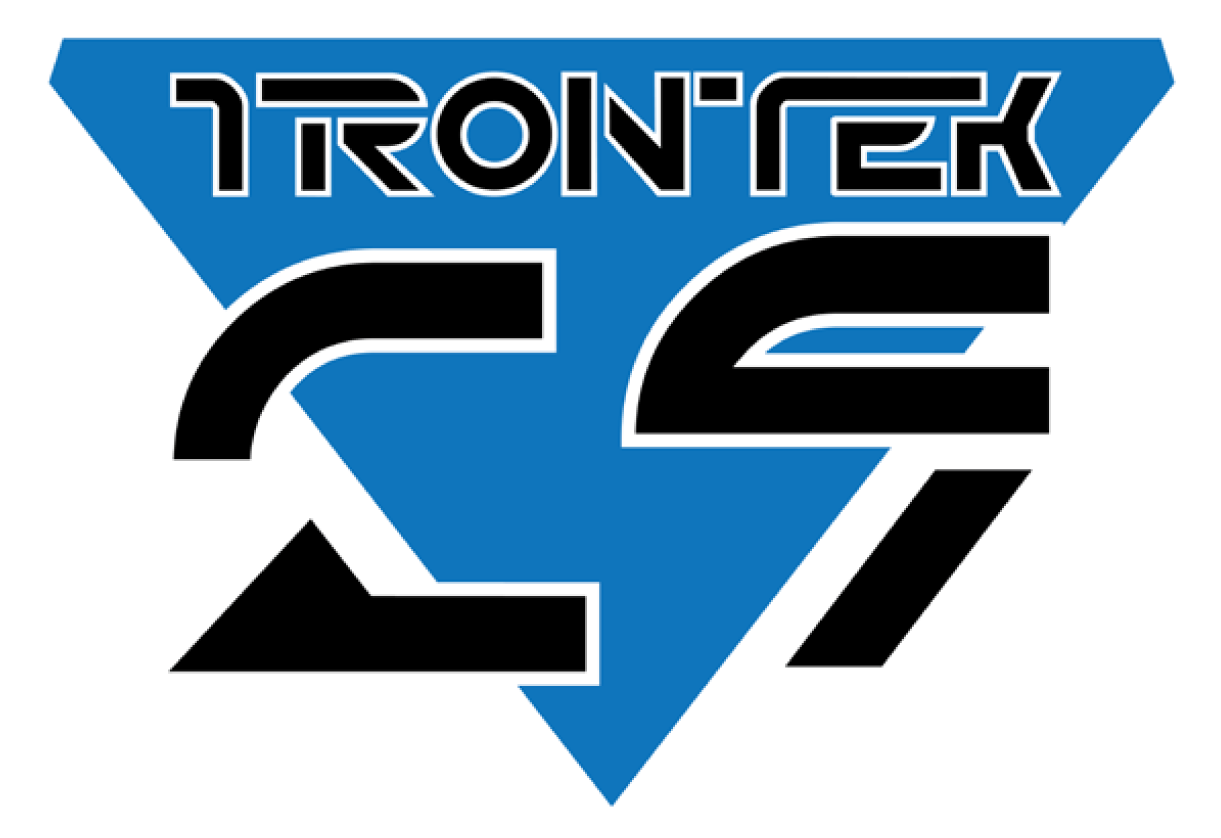
The outstanding name among DreadBall’s corporate sponsors has to be the industrial giant known as Trontek. Who can claim to live in the Co-Prosperity Sphere and not own an item they have manufactured? With interests as diverse as hamburgers and space freighters, they touch the lives of almost every citizen of the Sphere. Why not sport too?
Trontek became involved with DreadBall in its earliest days, bringing it to the vidcasts and sports channels in its rough and ready form. The explosion of popularity for the sport plus some bold management decisions gained them contracts for building bespoke armoured suits and whole arenas, and their aggressive business practices matched the violence on the pitch. Trontek muscled out any attempts at competition for almost 80 years, and until very recently all DreadBall kit was made by them. Even now the majority of famous players swear by the Trontek brand.

Greenmoon Smackers

The Smackers began their career as pirates, ambushing lonely merchant vessels from their hideout on the green moon of Lanthis IV. Eventually they found some recordings of DreadBall games in the entertainment suite of the MVV Bilge Rat and, with little to do for months on end, started playing games among themselves. As their raids began to focus on stealing DreadBall equipment, they soon came to the notice of Digby, who decided to strike a deal and bring their raw talent to the big leagues.
True to their origins, only Orx and Goblins can join the ranks of the Smackers and their imitators. It’s not always easy to get quality recruits, but then Goblins are known for their low standards at everything other than sliding out of trouble (and running away), so they’re happy to make do. Orx, on the other hand, can always be relied upon to thump things with little or no formal training.
Orx and Goblins have different strengths and make an interesting combination. The most obvious tactic starts with using the brute might of the Orx to smash as many of your opponents as possible. Once there are few of them left standing, the fact that the Goblins are prone to dropping the ball is less of a worry. Sometimes it’s a problem not having Strikers, though you do get the best Guards to make up for it.
Remember that you can play this team either as the Greenmoon Smackers themselves, or as your own team of green-skinned miscreants. The game values will be the same for all Orx and Goblin teams, but your team will be the meanest!
Greenmoon Smackers - Orx/Goblins
Starting Team: Guards x3, Jacks x5
Notes: Guards are Orx, Jacks are Goblins
Starting Assets: 1x Dice, 1x Card

- 5
- 3+
- 4+
- 5+
- 4+
- 13

- 5
- 5+
- 3+
- 4+
- 4+
- 9
Extras: an Orx and Goblin team starts with 1 Coaching Dice and 1 DreadBall Card.
Dreadball facts
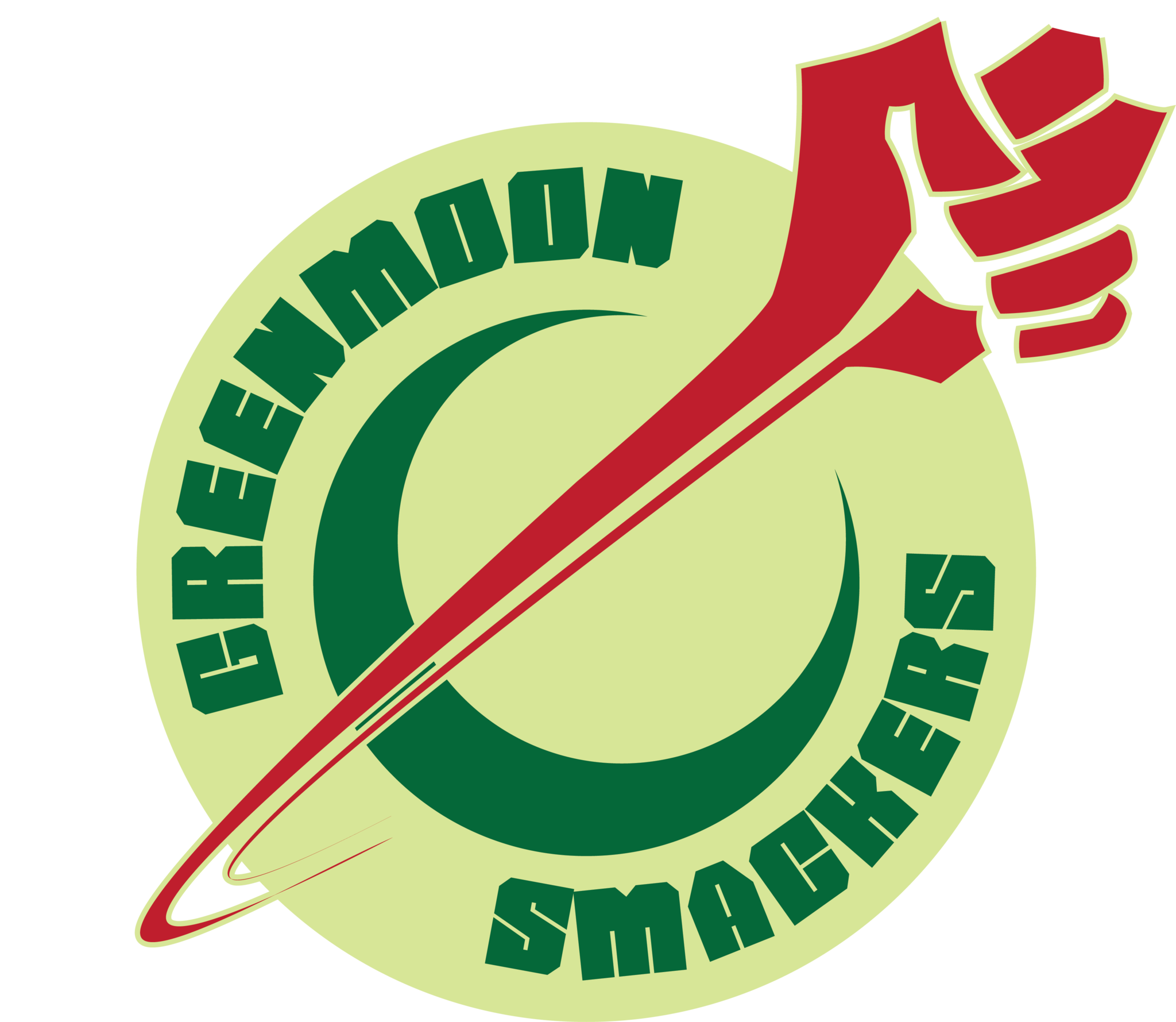
Every DreadBall arena needs some form of medical support and evacuation staff to clear the pitch of injured and dead players during the game. As with all aspects of this rapidly growing sport, the solutions to this problem vary enormously from grimly practical and crude to clever applications of the highest technology.
At its simplest, the job goes to a brave paramedic who runs onto the pitch to drag the fallen player off. As the game never pauses, this is clearly a very dangerous thing to do. Wealthier arenas have tried moving floor sections that deposit injured players onto an under-pitch network of conveyors, and the most advanced have mediporters to instantly teleport the injured from their crumpled heaps to a medi-bay.

Skittersneak Stealers
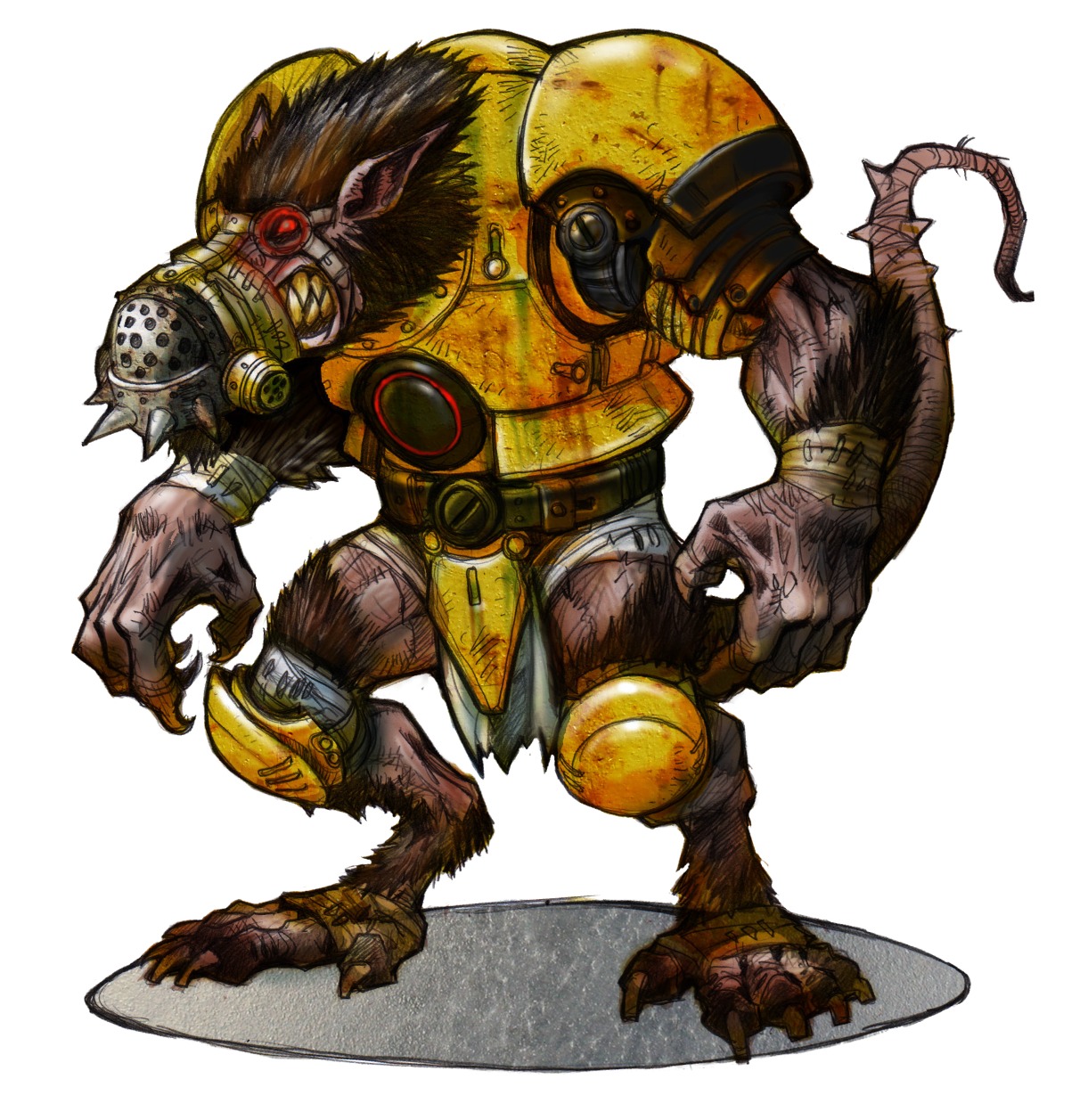
They say that you are never more than a couple of metres from a Veer-myn, and if that is the case then their DreadBall teams are far from surprising. There are so many DreadBall fans that they couldn’t help but hear all about it! Their most famous team of all is the Skittersneak Stealers – winners of the Thudweiser League in ’37 and ’39, and holder of more “Most Fouls” awards than any other team in DreadBall’s history.
Veer-myn are not really a natural race for DreadBall. They have terrible depth perception and their nervous twitchiness gives them real trouble when catching the ball. It is a testament to their enthusiasm and perseverance that they can play at all, and they do play pretty well. They only take Veer- myn recruits, choosing the best from the vast array of hopefuls who constantly step forward to try out for every team.
With a clarity of self-realisation uncommon in sport, the Veer-myn focus their training on the area they are naturally weakest at. The idea is that training will compensate for
a lack of innate talent and, to a degree, this works. This concentration gives you teams comprised mostly of highly trained Strikers, with a smattering of hardier rats as Guards. With a habit of making way more scoring chances than every other team, but missing far more of them, Veer-myn teams are not for Coaches with a nervous disposition or weak heart.
Remember that you can play this team either as the Skittersneak Stealers themselves, or as your own team of rats. There’s never any shortage of recruits. The game values will be the same for all Veer-myn teams, though naturally yours will be the big cheese.
Skittersneak Stealers - Veer-myn
Starting Team: Guards x2, Strikers x6
Starting Assets: 0x Dice, 1x Card

- 6
- 4+
- 3+
- 5+
- 4+
- 12

- 6
- 4+
- 3+
- 5+
- 5+
- 11
Extras: a Veer-Myn team starts with no Coaching Dice and 1 DreadBall Card.
DreadBall Facts

How can Veer-myn play in the DreadBall leagues? What about Orx and Forge Fathers? Aren’t they the enemy?
Is this safe? These were the sort of questions that greeted the earliest non-human teams when they took to the pitch for the first time back in The Thudweiser Cup XXXV. Several explanations have been offered in official press releases, scandal sheets and on serious newsfeeds.
To take the Veer-myn as an example, some folk hold the view that these are not real rat-men at all, but vat-bred stand-ins who simply look similar; others suggest robots could be the answer, carefully dressed up with sythnthiskin; clones are another possibility.
Rex Roth from DNN ran a series of articles supposedly uncovering a capture and breed programme, but that has been largely debunked as the result of an overactive journalistic imagination.
These days the average DreadBall fan simply doesn’t care. The non-humans add so much spectacle and excitement to the game that any cultural foibles are seen as just part of the showbiz atmosphere and razzmatazz that accompanies the big games. Some have even gone so far as to suggest that DreadBall should be officially adopted as the means to resolve disputes instead of fighting wars!
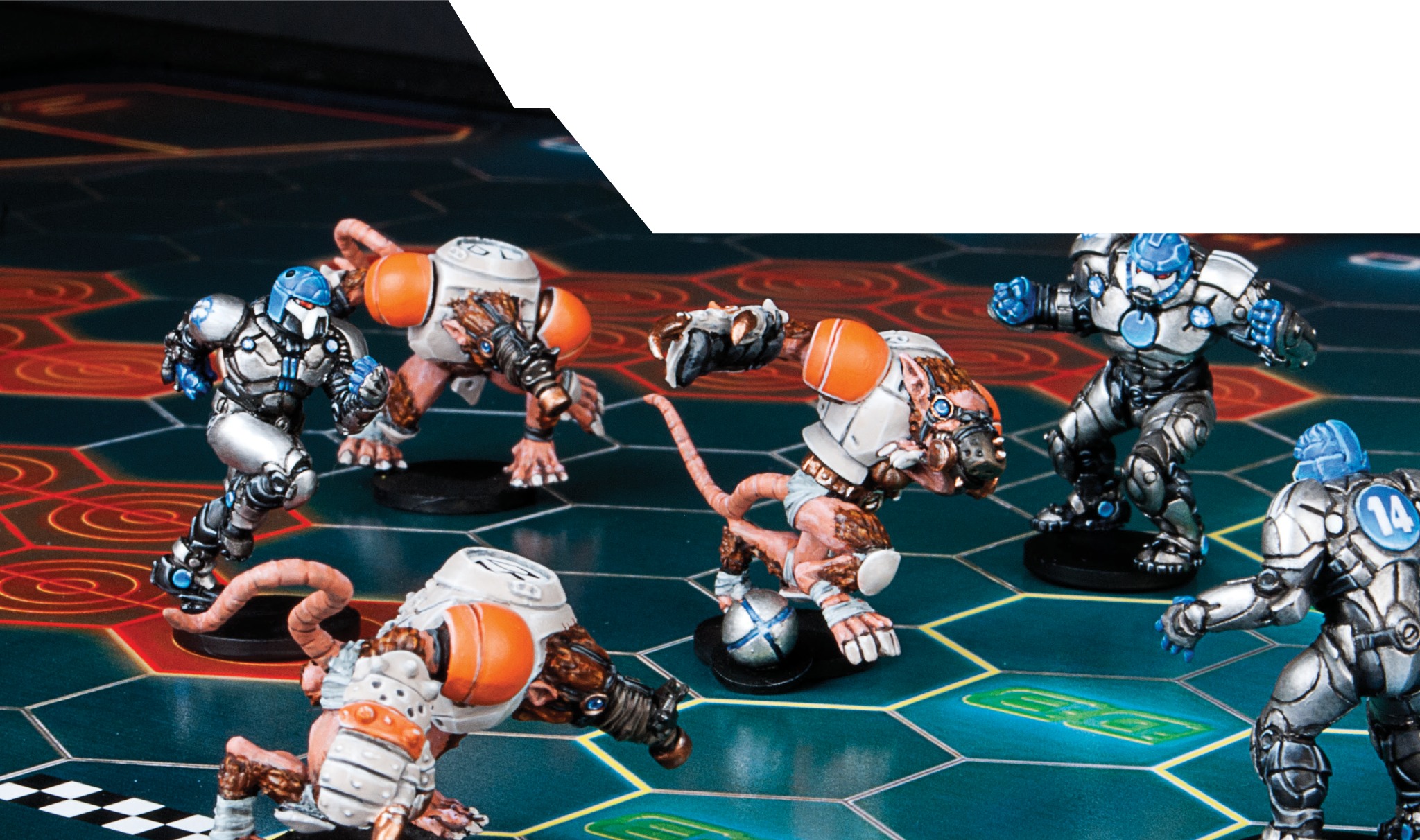
Midgard Delvers
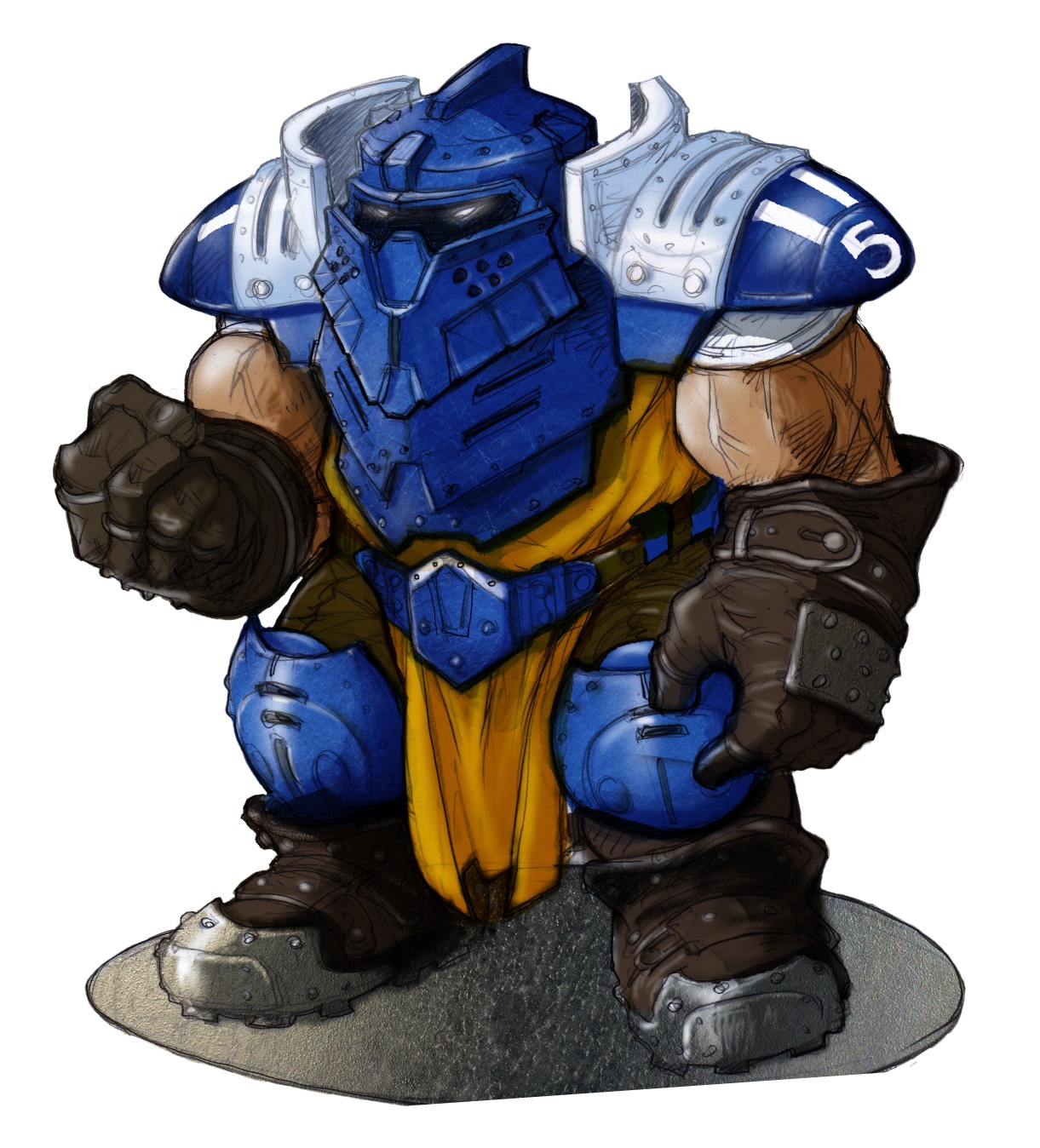
It all began with a deal, as is common with the Forge Fathers. They would be allowed to play in the league in exchange for certain mining rights and technical know-how. These days, after years of play and several league victories, it is hard to imagine the leagues without the doughty presence of the father teams, first among whom are the stalwart players of the Midgard Delvers.
The Forge Fathers aren’t the most demonstrative race, though DreadBall has rapidly built a fanatical following in the mining fields of their domains. Forge Fathers are the only race allowed in these teams, and while recruiting can be slow (like most things with these folk), there always seem to be more available when you need them.
Forge Father teams are perhaps a little more flexible than they at first appear. Their obvious strength is their Strength, which is even more potent when combined with the Steady ability. Together they make a front line of Guards who are very hard to shift. However, they can also work well with a variety of other styles of play and can easily surprise an unwary opponent.
Remember that you can play this team either as the Midgard Delvers themselves, or as your own version of the vertically challenged type. The game values will be the same for all Forge Father teams, though yours will be the most resolute!
Midgard Delvers - Forge Fathers
Starting Team: Guards x3, Jacks x3, Strikers x2
Notes: Guards - Steady

- 4
- 3+
- 5+
- 4+
- 4+
- 13

- 4
- 3+
- 5+
- 4+
- 4+
- 9

- 4
- 3+
- 5+
- 4+
- 5+
- 9
Extras: a Forge Father team starts with 1 Coaching Dice and 1 DreadBall Card.
Dreadball Facts
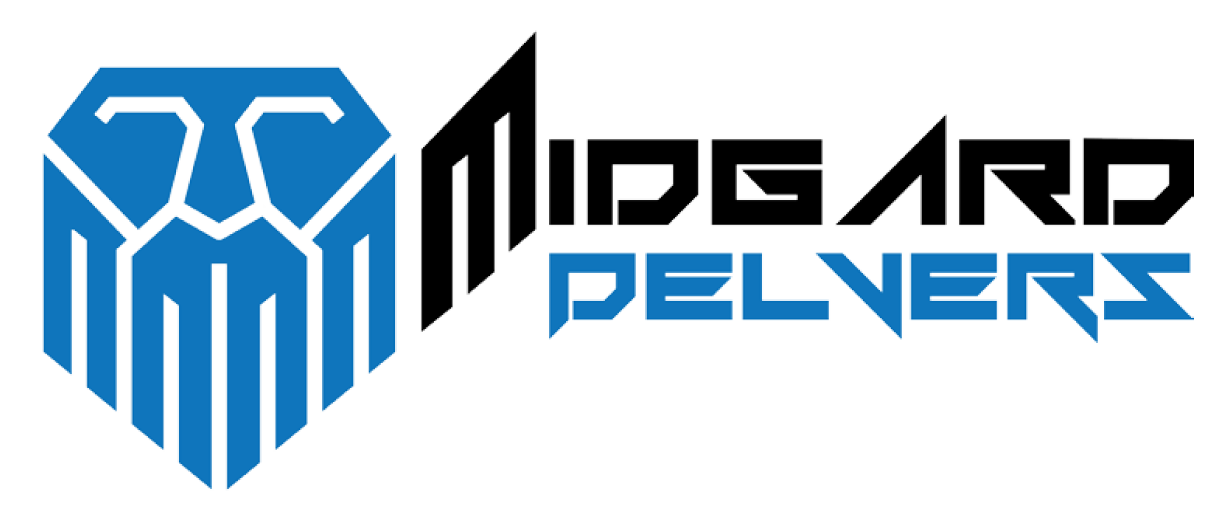
Of all the non-human teams, the Forge Fathers have the simplest explanation for playing: money. Forge Father society is divided into many sub-groups and not all see eye-to-eye with their leaders who choose to fight against the Corporation.
Some consider this to be lost profit and a missed business opportunity and have decided to make their own peace and their own deals with the humans. There are limits to the technology they will share, but Digby’s strict control over what is allowed in the arena and the size of the prizes in the DreadBall leagues make this an area they can take part in without revealing any secrets and in the hope of great profit.
Of course there have been other less credible “Forge Father” team as as well, the most famous of the fakes being the Latherton Little Guys. They were rumbled in their first game when one of their arms came off in a shower of sparks and wires. Latherton Industries had simply refitted some of their sewer cleaning robots with DreadBall gear and hoped that their rudimentary logic circuits could cope, little realising the complexities of the game. By the end of the brief game the crowd were on their feet booing the imposters, and Latherton has never entered another team.
